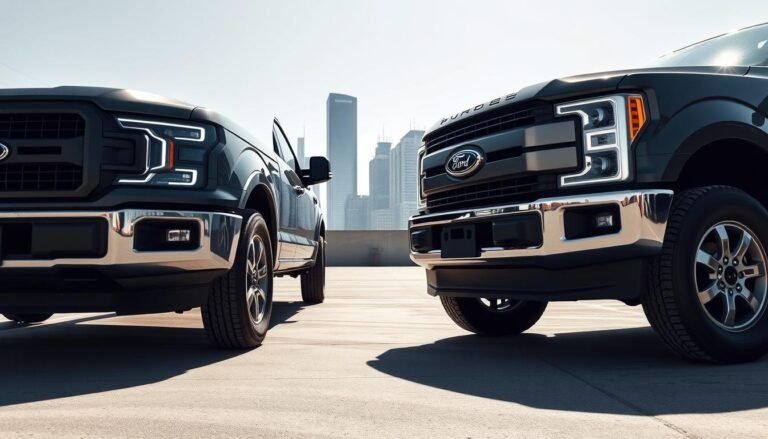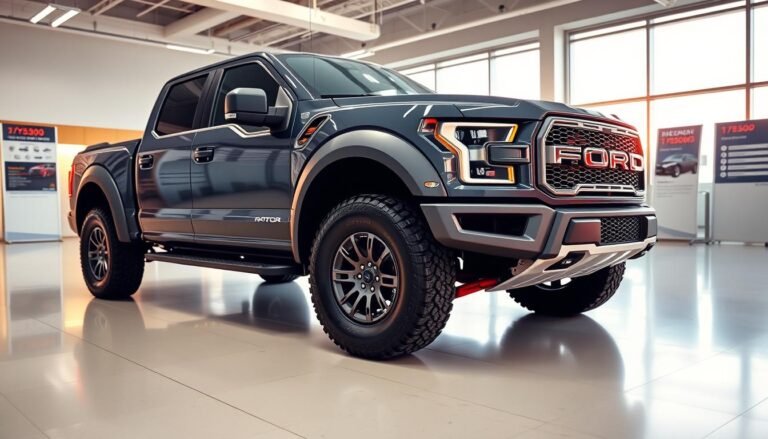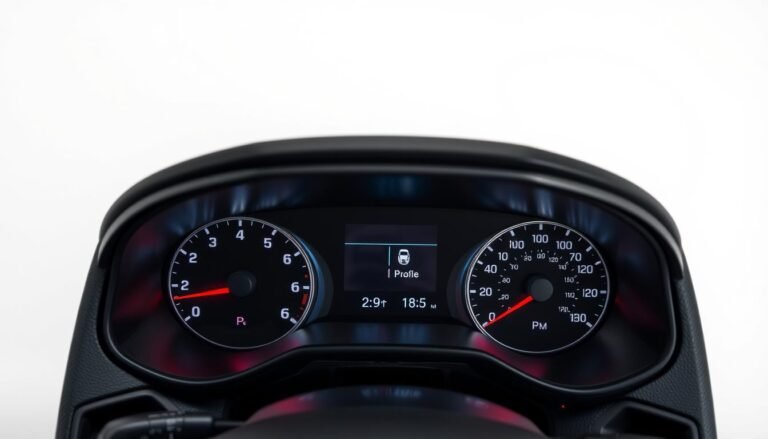What Is Ford Flex Fuel Explained? Eco-Friendly Driving
What is Ford Flex Fuel? It’s a system that lets your car use a mix of gasoline and ethanol. The most common mix is E85, with 51% to 83% ethanol.
This option helps reduce your carbon footprint and offers the flexibility of driving an FFV. Over 20.9 million FFVs are on U.S. roads today.
This shows more people are choosing sustainable transport options. In this section, you’ll learn how Ford Flex Fuel supports eco-friendly driving.
We’ll discuss its benefits and what FFVs are. You’ll also get a brief history of this fuel solution. Knowing about Ford Flex Fuel helps you make greener choices while driving.
Introduction To Flex Fuel Vehicles
Flex Fuel Vehicles (FFVs) can run on different fuels, like gasoline and E85. This idea started in the 1990s to make cars more fuel-efficient and less reliant on oil.
They have special systems that change how they use fuel, making them flexible. Choosing a flex fuel vehicle helps the U.S. make more fuel at home. This is good for energy freedom.
Plus, FFVs are kinder to the planet, making them a smart choice for those who care about the environment. They fit into the trend of using green transportation.
What Is Ford Flex Fuel?
To understand Ford Flex Fuel, we need to know what it is and how it works. It uses E85 fuel, a mix of ethanol and gasoline.
E85 usually has about 85% ethanol, but this can change based on where you are and the season.
Using E85 offers better performance and supports renewable energy. This makes it a great choice for those who care about the environment.
Definition and Composition
Ford Flex Fuel systems can handle different ethanol levels. They aim to improve engine performance and cut down on emissions.
E85, the main fuel, is mostly ethanol, made from renewable sources. This makes it a good option for those who want to use green energy.
Ford’s systems let you easily switch between gasoline and E85 without any car changes.
How it Works with FFVs?
Flexible Fuel Vehicles (FFVs) can run on E85 or regular gasoline. They have sensors that check the fuel’s ethanol level and adjust the engine.
This way, you get the perks of alternative fuel without losing performance.
Ford’s technology makes sure your car runs smoothly, no matter the fuel. This is thanks to their innovative approach to fuel systems.

History of Flex Fuel
The journey of flex fuel vehicles started in the 1990s. Ford was the first to introduce these vehicles, leading the way. Other big names like General Motors and Toyota soon followed.
Government support was key in this change. They offered incentives to encourage people to use flex fuel vehicles. This helped move away from traditional fuels.
Today, many car makers use flex fuel technology. These vehicles show promise for cleaner fuel options and better environmental care.

| Year | Milestone | Manufacturer |
|---|---|---|
| 1990 | First commercial flex fuel models introduced | Ford |
| 1996 | Increased adoption of flex fuel technology | General Motors |
| 2000 | Government incentives for FFVs begin | Multiple Manufacturers |
| 2010 | Growing awareness and production of E85 | Toyota |
| 2020 | Significant advancements in flex fuel tech | Various Automakers |
Benefits of Ford Flex Fuel
Ford Flex Fuel vehicles offer big advantages, like saving money and helping the environment. They let you save a lot and support green practices.
Environmental Advantages
Switching to Ford Flex Fuel is good for the planet. Ethanol, found in flex fuel like E85, burns cleaner than regular gas.
This means less harmful pollutants and greenhouse gases, helping fight climate change. Studies show E85 can cut down greenhouse gas emissions by up to 34%.
While making ethanol can use a lot of land and water, the benefits to the environment are huge.
Cost-Effectiveness of E85 Fuel
E85 fuel is usually cheaper than regular gas, saving you money every day. By choosing Ford Flex Fuel, you save money and help the planet.
These vehicles are made to run well on E85, so you get the most out of your fuel.

| Key Factors | Traditional Gasoline | E85 Ethanol |
|---|---|---|
| Typical Emissions | High | Lower |
| Lifecycle Greenhouse Gas Emissions Reduction | 0% | Up to 34% |
| Cost per Gallon | Higher | Generally Lower |
| Cleaner Combustion | No | Yes |
Ford Flex Fuel vehicles are a big step forward in car tech. They offer a green choice that saves money and cuts emissions.
Ford Flex Gas Mileage and Performance
The Ford Flex is designed to perform well with different fuels. It’s key to know that using gasoline versus E85 affects its gas mileage.
E85, with more ethanol, usually means less fuel efficiency. Yet, E85 can make your car accelerate faster because of its higher octane.
This can make driving more exciting. But, you should think about how this affects your gas use.
As a Ford Flex owner, knowing how fuel choices impact your car is important. It helps you make choices that balance fuel efficiency and driving fun.

What is E85 Fuel?
E85 fuel is a choice for those who care about the environment. It has its benefits and challenges.
Knowing what it is and its advantages can help you choose better energy sources for your car.
Composition and Benefits
E85 fuel is a mix of 51% to 83% ethanol and gasoline. The exact mix can change based on where you are and the season.
Ethanol, made from things like corn and sugarcane, is good for the planet. It can cut down on greenhouse gas emissions a lot.
The good things about ethanol are:
- It’s better for the environment than regular gasoline.
- It helps local farmers by creating demand for their crops.
- It makes us less dependent on fossil fuels.
But, how green E85 fuel really is also depends on how crops are grown and the emissions from making fuel.
Challenges with E85 Availability
Switching to E85 fuel comes with its own set of problems. Where you live affects how easy it is to find E85.
Not all places have it, so you need to plan your gas stops. Some issues you might face are:
- Not all places have E85 stations.
- It might not be as efficient in cars not made for it.
- Prices can change a lot compared to regular gas.
Knowing these things can help you use E85 fuel to its fullest while dealing with its downsides.
Ford Flex Hybrid Vehicles
The Ford Flex Hybrid is a big step forward in cars. It mixes the Flex’s roominess with hybrid benefits. This means better gas use and less pollution.
It also makes driving greener and more fun. Driving a Ford Flex Hybrid lets you pick between regular gas and cleaner E85. This is great for those who care about the planet.
It’s a smart choice for our eco-friendly world. Choosing a Ford Flex Hybrid means getting a car that’s both comfy and green.
It’s perfect for those who want to help the environment without giving up on style or ease. Ford’s focus on new tech meets today’s green goals.
| Feature | Standard Flex | Ford Flex Hybrid |
|---|---|---|
| Fuel Type | Gasoline | Gas/Electric |
| Mileage (City) | 18 MPG | 25 MPG |
| Mileage (Highway) | 25 MPG | 30 MPG |
| Emissions | Higher | Lower |
Switching to a Ford Flex Hybrid is a personal choice that helps the planet. It’s great for those who want a big SUV but also care about the environment. It’s a smart pick for our green future.
Flex Fuel Conversion Kits
Flex fuel conversion kits are aftermarket solutions for those who want to improve their vehicle’s fuel options. They make conventional gasoline vehicles run on various ethanol blends.
By changing your vehicle’s fuel system and engine management, you can enjoy flexible fuel options and better environmental performance.
What They Are and How They Work?
These kits make it easy to use different types of fuel. They adjust the fuel delivery system and update the engine management software.
This lets you use higher ethanol blends like E85. With these kits, you can get better fuel efficiency and lower emissions, great for those who care about the environment.
Considerations When Installing A Kit
Before you install a kit, think about a few important things:
- Vehicle Model: Make sure your vehicle can use the flex fuel conversion kit you choose.
- Installation Skills: Decide if you can install it yourself or if you need a professional.
- Fuel Availability: Check if E85 or other ethanol blends are available in your area.
- Performance Monitoring: Watch your vehicle’s performance after installation and make any needed adjustments.
Ford Flex Fuel Compatibility
Knowing if your car can use Ford Flex Fuel or E85 is key for better performance and fuel efficiency.
Not all cars can handle these fuels. It depends on the car’s design and fuel system. To check if your car can use flex fuel, look for labels on the fuel door.
Or, check your owner’s manual for details. Many cars with this feature have a “Flex Fuel” badge. If you’re not sure, you can check Fueleconomy.gov.
They have lists of cars that can use flex fuel. This helps you make smart choices about using flex fuel.
Challenges of Flex Fuel Usage
Flex fuel vehicles have many benefits but also face challenges. Knowing these issues helps you make better choices about car care and fuel.
Two big concerns are engine damage risks and finding flex fuel stations.
Engine Damage Risks
Flex fuel use can harm your engine. Ethanol in flex fuel attracts moisture, causing corrosion in engine parts. If not managed, it can damage rubber parts in the fuel system.
This can lead to expensive repairs over time. Being careful about these ethanol issues helps keep your car running well for longer.
Availability of Flex Fuel Stations
Finding flex fuel stations is another challenge. Even though more stations are popping up, they’re not as common as gas stations.
This can make it hard to find E85 or other flex fuels, more so in rural areas. For those using flex fuel, planning your fuel stops is key. It helps avoid any travel hassles.
Conclusion
Ford Flex Fuel is a smart choice for those who care about the environment. It lets you use both regular gas and E85.
This makes driving not only unique but also better for the planet. The car world is moving towards being more green.
It’s key for both buyers and makers to know the good and bad of using different fuels.
This knowledge helps you deal with the ups and downs of using alternative fuels every day. Learning about Ford Flex Fuel helps you choose cars that match your green values.
Using such technology boosts your car’s performance. It also supports a bigger push for eco-friendly travel.
FAQs
Q: What is Ford Flex Fuel?
A: Ford Flex Fuel is a system that lets cars run on a mix of gasoline and ethanol. This mix, often E85, has 51% to 83% ethanol. It’s better for the environment and cuts down on carbon emissions compared to regular gasoline.
Q: How do Flex Fuel Vehicles (FFVs) work?
A: FFVs have special fuel systems. They adjust to the fuel mix automatically. This lets you choose between gasoline or ethanol blends, based on what’s available or what you prefer.
Q: What is E85 fuel and its benefits?
A: E85 is a mix of 51% to 83% ethanol and gasoline. It’s good for the planet because it lowers greenhouse gas emissions. It also means less use of oil-based fuels, making it a greener choice than regular gasoline.
Q: What is the gas mileage of Ford Flex vehicles using E85?
A: Using E85 can make your car use more fuel than gasoline. But, E85 can make your car go faster because ethanol has a higher octane rating.
Q: Are Ford Flex vehicles compatible with flex fuel?
A: Not all Ford cars can use flex fuel. Check the fuel door or owner’s manual for a “Flex Fuel” badge. Or, use Fueleconomy.gov to see if your car can use flex fuel.
Q: What are flex fuel conversion kits?
A: Flex fuel conversion kits let regular gasoline cars use ethanol blends. They upgrade the fuel system and engine management. This makes your car more eco-friendly and gives you more fuel options.
Q: What risks are associated with using flex fuel?
A: Flex fuel can be good, but it has risks. Ethanol can attract moisture, which might harm rubber parts in the fuel system. This can happen if the fuel isn’t made for high ethanol levels.
Q: How does the availability of flex fuel impact its usage?
A: Where you can find flex fuel stations affects how much you can use it. Knowing how good flex fuel is can encourage more places to offer it. This would make it easier to use these eco-friendly fuels.







